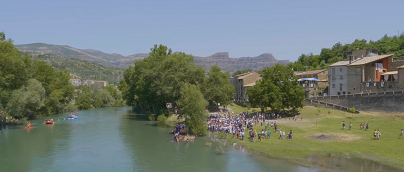
If you prefer to always view the website in English, please click here.
If you prefer to always view the website in English, please click here.
Bat conservation (chiroptera) is an outstanding issue in Spain and a topic is arousing interest in Europe. Their troublesome decline and their ecological importance as a bioindicator of the healthiness of ecosystems, as well as their work at reducing plagues and regulating insect populations make it a mammal of great importance that should be protected, in accordance with the IUCN (International Union for Conservation of Nature).
32 chiroptera species have been found breeding, hibernating or being reproduced. All these species are included in the Spanish List of Wild Species with Special Protection: twelve are considered to be vulnerable, and one (Myotis capaccinii) is endangered. Fourteen of them are classified within the Habitats Directive (43/92/CEE); eleven in Annex II (species of Community Interest) and the remaining three in Annex IV (Species of Community Interest that require strict protection).
Tunnels in hydroelectric power stations are typical bat habitats due to their combination of darkness, quiet, humidity and even temperatures in winter and summer. Bat colonies have been found in Endesa facilities on many occasions, particularly in side tunnels or access tunnels to gates. In some cases, the type of tunnel closure makes it hard for them to get in and breed. This situation it is improving by suiting them to make them perfectly compatible with the infrastructure management.
With the Endesabats Project, and working with experts from the Laboratorio de Biodiversidad y Conservación Animal del Centre Tencològic Forestal de Catalunya (Biodiversity and Animal Conservation Laboratory at the Catalan Forestry Technology Centre), we aim to gain more knowledge and improve conservation of cave-dwelling bats, their ecological requirements and how they affect hydroelectric power station operations. We also want to emphasise the importance of these infrastructures for endangered chiroptera species, and to propose management measures to help their conservation and their presence in this type of facilities as well.
The study has been conducted in a number of phases:
This project highlights the key role played by the infrastructures of most of the plants providing shelters for bats, enabling them to successfully complete their life cycle (breeding, mating and hibernation). It also shows how reservoirs favour the community of bats by providing them with hunting areas, such as the calm waters that are concentrated in the dam, and the riverside forest that thrives in the vicinity.
These years of study and data collection are enabling Endesa to take a number of actions to adapt hydraulic installations and be able to protect bat colonies. These measures include the following: Conditioning the entrances to the tunnels, installing specific shelter boxes and reducing luminosity in certain points that are critical for bats.





